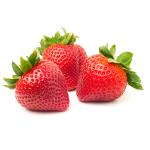Hello all and Happy Friday! We are celebrating the first days of summer with all of our local summer favorites for next week’s bins!
Why buy local? (from SustainableTable.org) At its roots sustainable farming benefits the local community and local economy while supporting the environment by enriching the soil, protecting air and water quality, and minimizing energy consumption. Industrial food production is entirely dependent on fossil fuels, which, when refined and burned, create greenhouse gases that are significant contributors to climate change. The biggest part of fossil fuel use in industrial farming is not transporting food or fueling machinery; it’s chemicals. As much as forty percent of the energy used in the food system goes towards the production of chemical fertilizers and pesticides. By adding transportation, processing and packaging to the food system equation, the fossil fuel and energy use of our current food system puts tremendous stress on the environment. For example, between production and transportation, growing 10% more produce for local consumption in Iowa would result in an annual savings ranging from 280,000 to 346,000 gallons of fuel, and an annual reduction in CO2 emissions ranging from 6.7 to 7.9 million pounds.We’ve got quite the specialties next week and we cannot wait to hear how you use them! Our most intriguing item next week will be garlic scapes.
What are garlic scapes you ask? Garlic scapes are the soft, lime-green-colored stems and unopened flower buds of hard-neck garlic varieties. Scapes have a mild garlic flavor and a slight sweetness, which makes them a prized addition in the kitchen. You can find them in the early summer and midfall at farmers’ markets. If you grow your own garlic (which is easy), trim the scapes off before their flowers open. This forces the plant to focus on bulb production and increases the size of the garlic cloves.
stems and unopened flower buds of hard-neck garlic varieties. Scapes have a mild garlic flavor and a slight sweetness, which makes them a prized addition in the kitchen. You can find them in the early summer and midfall at farmers’ markets. If you grow your own garlic (which is easy), trim the scapes off before their flowers open. This forces the plant to focus on bulb production and increases the size of the garlic cloves.
Not sure how to eat them? Try our favorite recipe: Pasta with Garlic-Scape Pesto.
We are also very excited for the summer berries next week! Both the raspberries and strawberries are coming in from the NW! (woohoo!) Berries are wonderful because they are quick and delicious ways to get nutrients throughout the day.
What else is great about these berries? Let us count the ways.
 Strawberries (from besthealthmag.ca) : Nutrient-rich and packed with antioxidants (like vitamin C), strawberries offer a wide range of health benefits, some of which may surprise you.
Strawberries (from besthealthmag.ca) : Nutrient-rich and packed with antioxidants (like vitamin C), strawberries offer a wide range of health benefits, some of which may surprise you.
Strawberries promote eye health
The antioxidant properties in strawberries may also help to prevent cataracts—the clouding over of the eye lens—which can lead to blindness in older age. Our eyes require vitamin C to protect them from exposure to free-radicals from the sun’s harsh UV rays, which can damage the protein in the lens. Vitamin C also plays an important role in strengthening the eye’s cornea and retina. While high doses of vitamin C have been found to increase the risk of cataracts in women over 65, researchers from the Karolinska Institutet in Stockholm note that the risk pertains to vitamin C obtained from supplements, not the vitamin C from fruits and vegetables.
Strawberries help fight cancer
Vitamin C is one of the antioxidants that can help with cancer prevention, since a healthy immune system is the body’s best defense. A phytochemical called ellagic acid—also found in strawberries—is another. “Ellagic acid has been shown to yield anti-cancer properties like suppressing cancer cell growth,” says Edwards. “Strawberries [also] contain antioxidants lutein and zeathancins. Antioxidants are scavengers to free-radicals and neutralize the potentially negative effect they can have on our cells,” she says. The term “free-radicals” refers to damaged cells that weaken other cells around them in an effort to repair themselves, which can lead to cell abnormalities and even cancer.
Strawberries keep wrinkles at bay
The power of vitamin C in strawberries continues, as it is vital to the production of collagen, which helps to improve skin’s elasticity and resilience. Since we lose collagen as we age, eating foods rich in vitamin C may result in healthier, younger-looking skin. But vitamin C isn’t the only naturally-occuring wrinkle fighter found in strawberries. Researchers at Hallym University in the Republic of Korea concluded that ellagic acid visibly prevented collagen destruction and inflammatory response—two major factors in the development of wrinkles—in human skin cells, after continued exposure to skin-damaging UV-B rays.




